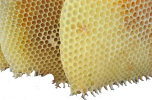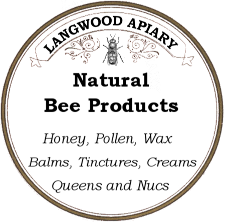 The use of bee wax for medicinal purposes has been known since the days of Hippocrates, Avicenna. Because bee wax is a biologically active product with bactericidal and preservative properties it is widely used in the pharmaceutical industry as a component of patches, ointments, balms used for the treatment of the skin and mucous membranes diseases, various wounds, burns, boils, pain syndromes.
The use of bee wax for medicinal purposes has been known since the days of Hippocrates, Avicenna. Because bee wax is a biologically active product with bactericidal and preservative properties it is widely used in the pharmaceutical industry as a component of patches, ointments, balms used for the treatment of the skin and mucous membranes diseases, various wounds, burns, boils, pain syndromes.
Bee wax contains antibiotic substances, a large amount of provitamin A, which improves reparative processes. Its plasticity and the ability to retain heat for a long time are especially valuable when applied locally to protect wound from moisture and infection. While being absorbed it feeds the skin and at the same time facilitates the delivery of other medical components into the skin. The absorbed bee wax improves the structure of the skin, softens and rejuvenates it. That is why it is a part of many nourishing creams and balms.
Bee wax is often used to treat diseases of the oral mucosa, nasopharynx, teeth, and gums. Bee wax chewing massages and cleans gums, teeth, tongue. The daily chewing of honeycombs is an important therapeutic and prophylactic factor in mouth cavity health. Chewing bee wax is also recommended for patients with inflammatory diseases of the nose and para nasal sinuses, pharyngitis, bronchitis and bronchial asthma. In addition, bee wax is used in ophthalmology for the preparation of applications with honey in cases of corneal burns.
When taken internally, bee wax improves motor and secretory functions of stomach and intestines, and provides an anti-inflammatory effect. For that reason, bee wax is recommended for patients with chronic enteritis and colitis, especially accompanied by spastic phenomena.
Most often, bee wax is used in pure form as an external agent or as part of creams and ointments. Because of its ability to retain heat for a long time, bee wax is used for hot compresses in treatment of skin inflammatory processes and in certain diseases of internal organs. For this purpose, the bee wax is heated in a pot placed in hot water. As soon as it becomes semi-liquid, it is poured into a plate, on the bottom of which to prevent sticking polyethylene film is placed. Cooling down, bee wax quickly hardens, but retains the heat. As soon as its temperature reaches 40 ° C, a cake of wax is wrapped on top of the sore spot. The warming up procedure starts from 5 minutes, in the following days the time gradually increases to 15-20 minutes. Before applying the bee wax compress, it is advisable to wipe the problem area with propolis oil. In case of arthritis, before applying the hot bee wax, the joint is covered with honey.
Topical use of bee wax (in pure form or as part of a cream or ointment) makes the skin smooth and improves its elasticity. Surgeons are well aware that the treatment of wounds with ointments and balms containing bee wax, is more successful, suppuration is prevented, reparative processes are accelerated, and the resulting scar is more elastic and smooth.
Adding bee wax to rectal suppositories allows to maintain the desired melting rate and uniform absorption of the delivered medicine.
